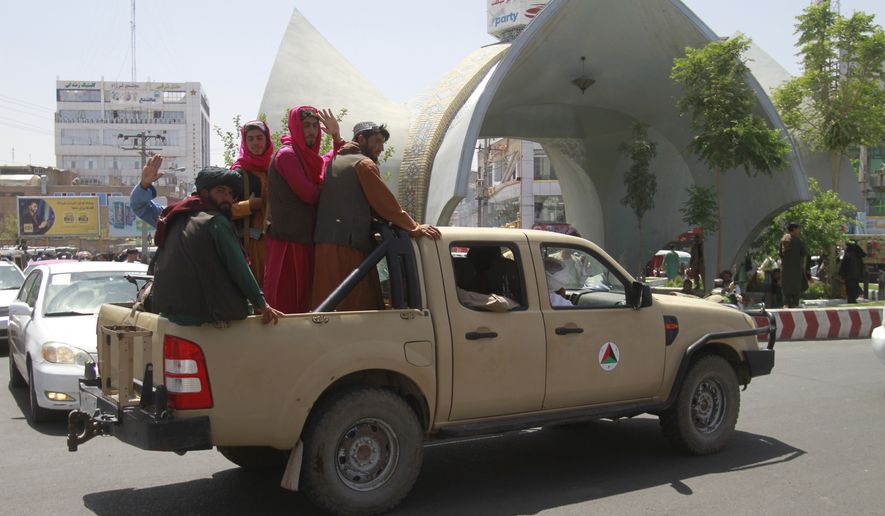President Biden’s national security team gave the public upbeat assessments of Afghan Security Forces just weeks ago before the 300,000-strong army and police began retreating and crumbling as a Taliban offensive took half the country’s 34 provincial capitals.
“I trust the capacity of the Afghan military,” Mr. Biden said on July 8.
“Afghan Forces Have Capacity to Fight, Defend Country, Milley says,” was the headline on a July 21 Pentagon press release.
“Milley” is Army Gen. Mark Milley, chairman of the Joint Chiefs of Staff, who held a press conference with Defense Secretary Lloyd Austin.
“The Afghan Security Forces have the capacity to sufficiently fight and defend their country, and we will continue to support the Afghan Security Forces where necessary in accordance with the guidance from the president and the secretary of defense,” Mr. Milley told reporters.
“You’ve got 34 provincial capitals in Afghanistan. None of them have been seized, as of today, by the Taliban, although the Taliban is putting pressure on the outskirts of probably about half of them.”
A month earlier he told the House Armed Services Committee, “There’s no provincial capital that is underneath Taliban control and there’s 34 of those. It is true that the Taliban are sniping at and picking off outposts, etc. and they have seized some district centers. Sixty percent of the 81 were seized last year and the others since last two months or so. So yes, we’re concerned.”
Today, the Defense Department has ordered a fresh batch of 3,000 troops to Afghanistan in anticipation of a partial embassy withdrawal in Kabul. In the spring, Mr. Biden ordered a complete U.S. forces withdrawal by the end of this month. It will end a 20-year war principally ordered by President George W. Bush to obliterate al Qaeda’s operating bases where it planned the 9-11 attack on America.
At the State Department on Aug. 4, chief spokesman Ned Price was asked by a reporter if the Taliban is operating with impunity since the U.S. continues to communicate with the Islamic extremists.
“They absolutely don’t, for a couple reasons,” Mr. Price said. “Number one, it is a simple fact that the Afghan Security Forces are numerically far superior to the Taliban. It’s a simple fact. They have over 300,000 troops. They have an air force. They have special forces. They have heavy equipment. The Taliban, in contrast, have less than 100,000 forces.”
Mr. Price said Mr. Biden plans to spend $3.3 billion more on the Afghan Security Forces in the next year.
“What’s also important is that the United States continues to support Afghan Security Forces, and we are committed to supporting them well into the future,” he said.
Secretary of State Antony J. Blinken told the Senate Appropriations Committee this summer that the U.S. embassy will remain in Kabul long term.
“Even as we’re withdrawing forces from Afghanistan, we are not withdrawing from Afghanistan,” he testified. “We’re determined to maintain a strong embassy presence.”
News reports said the embassy on Friday ordered the destruction of sensitive documents –– a sign diplomats believe they may have to abandon the ornate structure inside a safe zone.
The BBC on Friday showed footage of Afghan Security Forces fleeing the provincial capital Kandahar, the Taliban’s birthplace in southern Afghanistan.
At the White House on July 8, Mr. Biden said he inherited a pull-out date of May from President Trump and he believed August was the right deadline.
Asked if a Taliban takeover was inevitable, he praised the Afghan army.
“No it is not,” he said. “Because the Afghan troops have 300,000 well-equipped — as well-equipped as any army in the world — and an air force against something like 75,000 Taliban. It is not inevitable.”
“I trust the capacity of the Afghan military, who is better trained, better equipped, and more competent in terms of conducting war,” he added.
• Rowan Scarborough can be reached at rscarborough@washingtontimes.com.




Please read our comment policy before commenting.